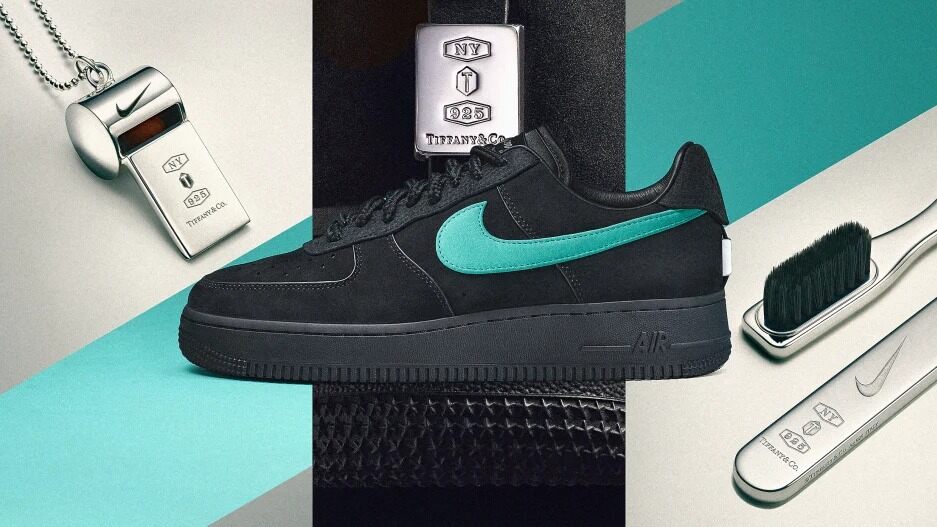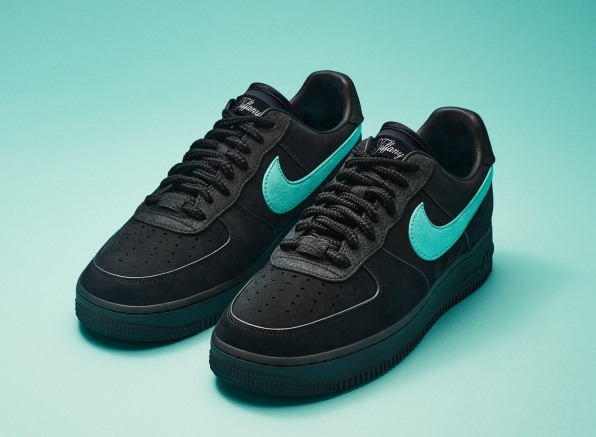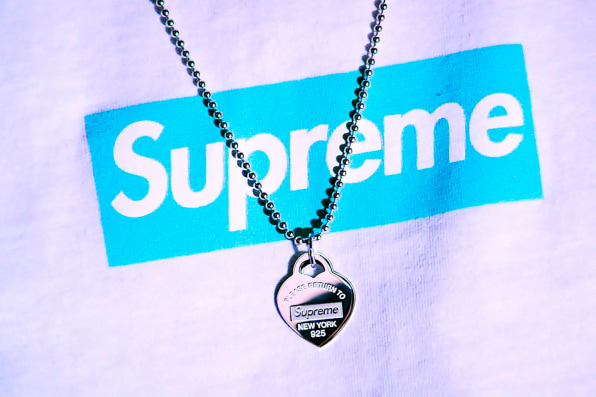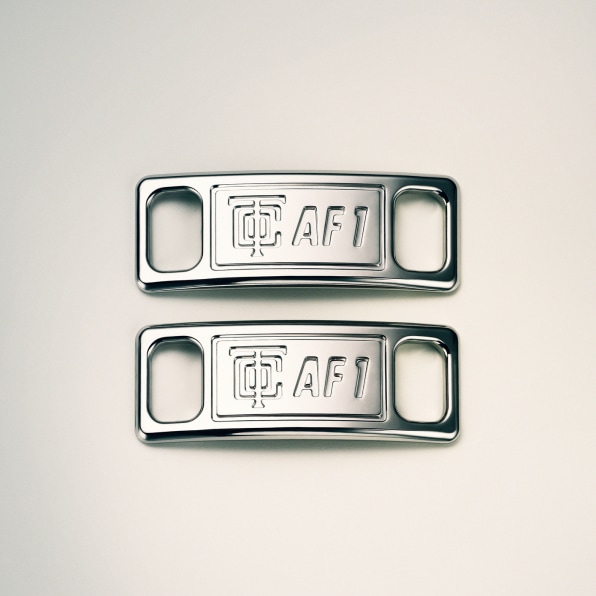- | 8:00 am
The Nike x Tiffany & Co collab is a match made in branding heaven
Collaborations are a dime a dozen, but Tiffany’s partnership with Nike has what it takes to stand out.

Forget catwalks: The NBA tunnel walk is where fashion is happening these days.
Last night, the NBA released an Instagram video showing LeBron James walking underneath Madison Square Garden fully decked out in pieces from the new Tiffany & Co x Nike collaboration that won’t drop till March 7. He wore a black letterman jacket with slick leather sleeves, featuring lots of Tiffany branding in its easily identifiable blue color. To finish off the look, he donned the unreleased Tiffany & Co x Air Force 1 sneakers, featuring a robin’s-egg blue swoosh, that will retail for $400. Nike says that the launch will also include limited-edition sterling silver shoe accessories, including a shoe horn and shoe brush that will be priced between $250 and $475.
James’s strut was clearly choreographed by both brands. The collaboration had only been announced 24 hours prior, and decking out James in the new pieces was a savvy move to drum up excitement from fans and the media. The strategy appears to be working, given how much news the partnership has received so far.

Collaborations are a fairly new strategy for Tiffany that began when French luxury conglomerate LVMH acquired the 186-year-old American jeweler in January 2021. At that time, 30-year-old Alexandre Arnault—the son of LVMH’s founder and CEO—became Tiffany’s executive vice president of product and communication. Arnault has spearheaded the steady stream of collaborations that have come out of Tiffany since. Some have been with other luxury brands, like Fendi and watchmaker Patek Philippe, but also with streetwear brand Supreme and artist Daniel Arsham. The company has created Tiffany blue basketballs and footballs with Wilson.

The Nike partnership is notable given it’s Tiffany’s first collaboration with a mass market brand that will allow the company to engage with a broader swath of young consumers. The goal, as with many collaborations, is to breathe new life into a dusty heritage brand. And even though the fashion industry is oversaturated with brand partnerships, Arnault appears to have his finger on the pulse of what makes a collaboration stand out. “We’re trying, little by little, to take advantage of everything Tiffany has been doing over the last 200 years as the only American luxury brand, and bring it into the current moment, making it part of cultural zeitgeist” he says.
This isn’t a new strategy for Arnault, who tapped his collaboration playbook when he became the CEO of the German suitcase company Rimowa in 2016, after LVMH acquired it. Rimowa partnered with everyone from Louis Vuitton to Supreme to Off-White. The company also teamed up with smaller, independent artists and labels, like the French label NASASEASONS and the Japanese brand United Arrows.
Arnault believes constant novelty and creativity is crucial to the success of modern luxury brands. “You need to be a part of the cultural conversation,” he says. “I feel like Tiffany wasn’t part of the conversation over the past few years.” One of the first things he did when he joined Tiffany was to build a team that was able to react quickly to what was happening in culture and find ways to engage. This has involved launching campaigns with the likes of Beyoncé and Jay-Z , and collaborating with other artists and brands.
Collaborations have been a mainstay of the fashion industry for the past decade. Initially, they were rarer and more noteworthy, but over time, brands have churned them out with increasing velocity. In 2023, we’re expected to see partnerships between Gucci and Adidas, Burberry and Supreme, Dior and Birkenstock, and Jacquemus and Nike. According to Kayla Marci, analyst at the fashion analysis firm Edited, collaborations have become so commonplace that they’re losing their power. In her research, she’s found that across the board, collabs tend to sell out at a slower pace. Their value on the resale market has also declined over time.

But that doesn’t mean collaborations aren’t worth doing, Marci adds. Partnerships can be very valuable because they tap into another brand’s audience. She points out that many brands, like Converse, drop collaborations every few weeks. The Converse collaboration with Comme Des Garcons in 2009 was so successful that the brands regularly put out new styles. “For some brands, collaborations are just a part of the core product strategy,” she says.
But even in a crowded landscape of collaborations, it’s possible for certain partnerships to stand out. Part of the reason the Tiffany & Co. x Nike collaboration works so well, Marci says, is that it’s unexpected. “It was an out of the box move for Tiffany, especially considering its history,” she says. “The brand is so associated with diamonds and jewelry. This positions it clearly in the fashion category.” She says this also has the potential to expand Tiffany’s product range into shoes and clothing, even after this particular collaboration passes.

The partnership is also surprising because Nike and Tiffany have such different audiences and price points. Priced between $250 to $475, the products within this collection—including the sneaker—will be relatively affordable, given that Tiffany jewelry tends to run run in the thousands of dollars. But Marci believes it will allow Tiffany to tap a younger customer base. “Nike resonates with the Gen Z consumer,” she says. “And the collaboration combines two very powerful symbols—the Nike swoosh and Tiffany blue—that are instantly recognizable.”
With his signature collaboration strategy, Arnault is establishing himself as the leader of a new generation of luxury goods. In the past, luxury fashion houses worried about partnering with mass market labels for fear that they would dilute their brand. And many tended to be conservative about their marketing efforts to keep up the aura of exclusivity. But this isn’t Arnault’s worry. “I worry about brands that are too pure and aren’t relevant,” he says. “It’s a delicate balance, for sure. But once you master it, you’re able to speak to a wide range of customers, from the high jewelry buyer to her granddaughter.”








































